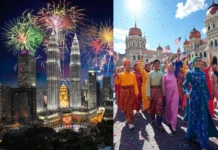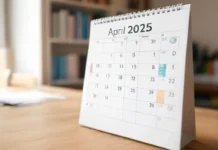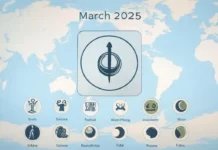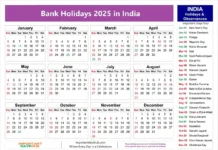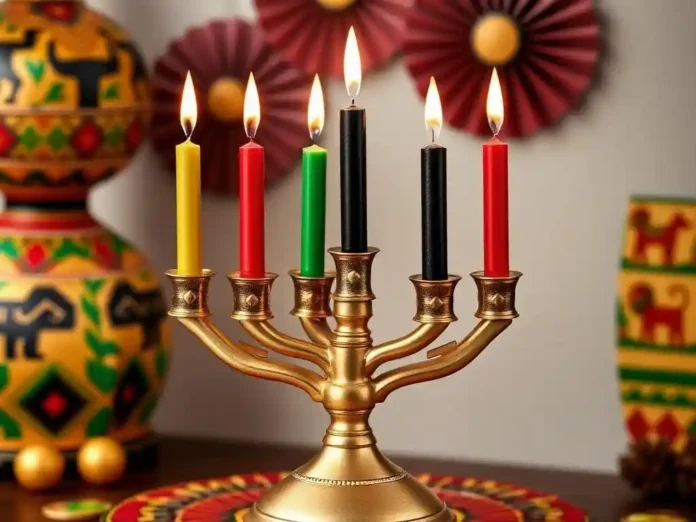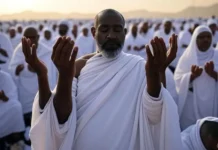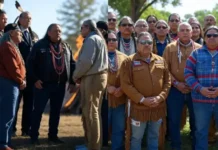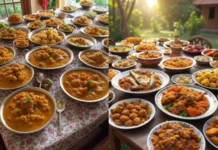Kwanzaa, celebrated from December 26 to January 1, is a cultural holiday that honors the history, heritage, and values of African Americans. Though it is not a religious observance, Kwanzaa focuses on the celebration of community, unity, and the African-American experience. The holiday was created in 1966 by Dr. Maulana Karenga, a professor and activist, as a way to reconnect African Americans to their African roots and culture. It is rooted in African traditions, particularly the harvest festivals from various African countries, emphasizing the importance of family, community, and self-determination.
Kwanzaa is celebrated over seven days, with each day dedicated to one of the Seven Principles (Nguzo Saba), which guide the beliefs and practices of the African-American community. With its mix of symbolic rituals, family gatherings, and educational initiatives, Kwanzaa promotes cultural pride, unity, and growth within African-American communities, and it is celebrated by people all over the world.
Key Details of Kwanzaa
| Aspect | Details |
|---|---|
| Date & Day | Date: December 26 – January 1 Day of the Week: Varies each year, starting on December 26 and lasting for seven days. |
| Theme | Theme: Kwanzaa doesn’t have a fixed yearly theme, but each year the celebration focuses on one of the Seven Principles (Nguzo Saba) of Kwanzaa. |
| Organizing Body | Kwanzaa was created by Dr. Maulana Karenga in 1966. While there is no centralized organizing body, the holiday is celebrated by communities, cultural groups, and organizations, especially in the United States. |
| Type of Observance | Kwanzaa is a cultural holiday, not a religious one. It is observed nationally in the U.S. and by African diaspora communities worldwide, particularly in countries like Canada, the UK, and several African nations. |
| Hashtags | #Kwanzaa2024 #CelebrateHeritage #NguzoSaba #KwanzaaFamily #CulturalCelebration |
History and Origin
Kwanzaa was founded by Dr. Maulana Karenga in 1966 during a time of social upheaval in the United States, following the Watts Riots. Dr. Karenga, a professor at the University of California, Los Angeles (UCLA), sought to create a holiday that would help African Americans reconnect with their African roots. It was designed as a cultural alternative to the more commercialized aspects of the Christmas season, focusing instead on heritage, community values, and collective action.
The name “Kwanzaa” is derived from the Swahili phrase “matunda ya kwanza,” meaning “first fruits,” reflecting traditional African harvest festivals. Karenga modeled Kwanzaa after African rituals and customs from various African cultures, aiming to celebrate the richness of African-American heritage while encouraging unity and pride.
The first Kwanzaa was celebrated in 1966 and has continued to grow in popularity, especially in African-American communities, though people from various backgrounds celebrate it worldwide. It is important to note that Kwanzaa is not a religious holiday—it is a secular, cultural event that emphasizes community building and family unity.
Importance and Objectives
Kwanzaa’s primary objectives are to reinforce the values of unity, self-determination, collective responsibility, and purpose within African-American communities. It serves as a time for families to gather, reflect on shared principles, and strengthen their connections to their African heritage.
Each of the seven days of Kwanzaa is dedicated to a specific principle (Nguzo Saba) that guides both individual behavior and communal interaction. These principles focus on:
- Unity (Umoja): Strengthening the bonds between family, community, and the broader African diaspora.
- Self-Determination (Kujichagulia): Encouraging people to define their own identity and goals.
- Collective Responsibility (Ujima): Working together to solve community problems.
- Cooperative Economics (Ujamaa): Supporting businesses and initiatives that help the community thrive.
- Purpose (Nia): Setting collective goals to improve the future.
- Creativity (Kuumba): Using creativity to leave a better world for future generations.
- Faith (Imani): Trusting in the ability to overcome challenges.
By celebrating Kwanzaa, families affirm their connection to these values, helping to create a sense of pride, empowerment, and purpose that can positively impact individuals and communities.
How It Is Celebrated
Kwanzaa is a family-centered celebration that typically includes several key traditions and activities. Here’s how the holiday is observed around the world:
1. Lighting the Kinara
Each day of Kwanzaa is marked by the lighting of a candle in the Kinara, a seven-branched candleholder. The central black candle is lit on the first day to symbolize unity, followed by the red and green candles over the subsequent days, which represent the other principles of the holiday. This ritual serves as a reminder of the principles and their importance.
2. Daily Reflections
Each day, families gather to discuss the principle of the day. They reflect on how that principle can be applied in their lives and share ways to incorporate it into their actions, both within the family and the community. For example, on the first day, the focus is on Umoja (unity), encouraging people to strengthen their bonds with one another.
3. Karamu (Feast)
On December 31, families and communities come together to celebrate with a large feast, known as the Karamu. This communal meal often includes traditional African-American foods such as fried chicken, collard greens, cornbread, and sweet potato pie, and it is accompanied by music, dance, and storytelling. The feast is a celebration of cultural heritage and community strength.
4. Gift-Giving
On the final day of Kwanzaa, gifts are exchanged, often educational or handmade items that reflect African traditions. These gifts emphasize the importance of growth, learning, and creativity.
5. Cultural Activities
In addition to the lighting of candles and family gatherings, Kwanzaa is often celebrated with public cultural events such as music, dance, and theater performances. These activities highlight African-American cultural achievements and encourage people to connect with their heritage through artistic expression.
In countries like India, Kwanzaa is not traditionally observed, but some African-American expatriates and local communities might host celebrations to share their culture and traditions. There are often performances, cultural workshops, and educational events in larger cities.
Interesting Facts
- The Pan-African Flag: The colors of the candles—red, black, and green—are inspired by the Pan-African flag created by Marcus Garvey in 1920. Red symbolizes the blood shed by African ancestors, green represents the hope for the future, and black stands for the people.
- The Kinara’s Seven Candles: The seven candles of the Kinara represent the Seven Principles of Kwanzaa. One black candle is placed in the center, followed by three red candles on the left (symbolizing struggle) and three green candles on the right (symbolizing hope).
- The Mkeka Mat: The Mkeka, a woven straw mat, symbolizes the foundation of the community. It is where all other Kwanzaa symbols are placed during the celebration.
Quotes or Messages
- “Kwanzaa is a time to reflect on the richness of our culture and to embrace the beauty of unity and community.” – Dr. Maulana Karenga
- “Let us teach the younger generations about our history and heritage so that they may know who they are and who they can become.” – Unknown
Conclusion
Kwanzaa is an important celebration that not only honors the history and culture of African Americans but also encourages unity, community, and self-empowerment. Whether you’re celebrating it with your family or learning about it for the first time, Kwanzaa offers an opportunity to reflect on values that strengthen both individuals and communities.
If you’d like to learn more about other important cultural celebrations, explore our Cultural Festivals Section or join our WhatsApp Channel for more updates. Feel free to share your thoughts on Kwanzaa and how you celebrate it in the comments below!




